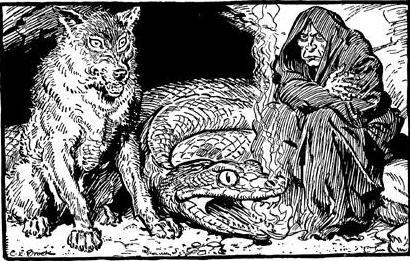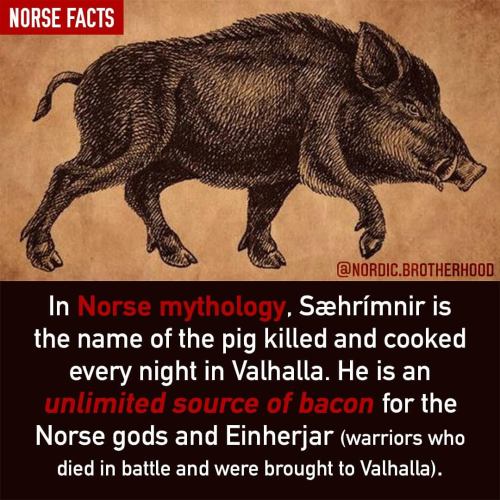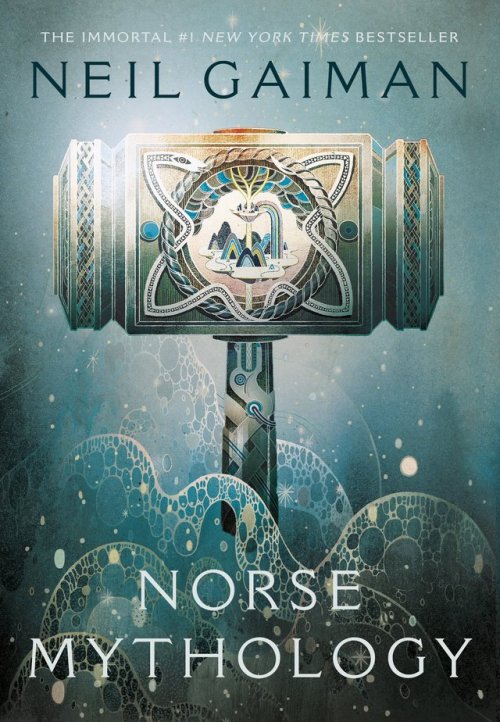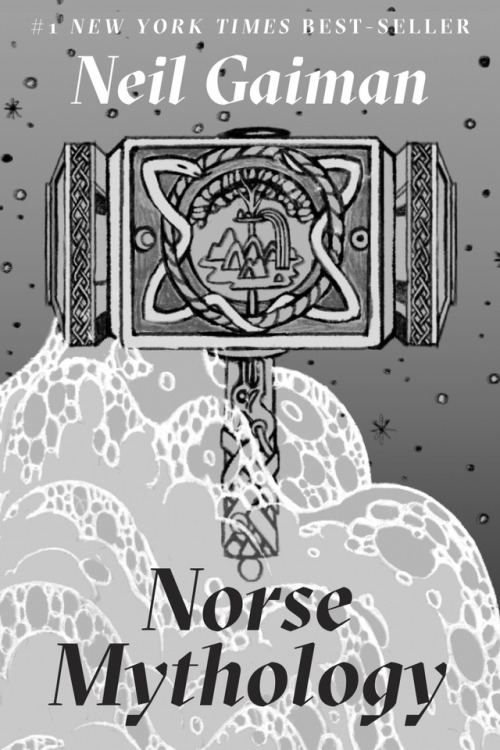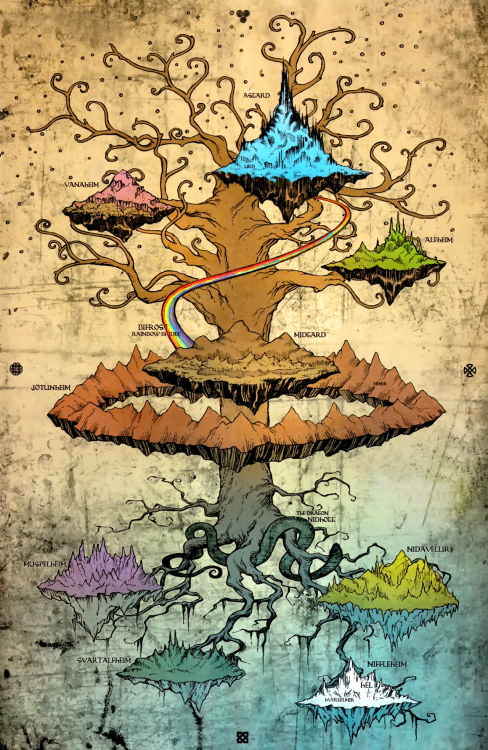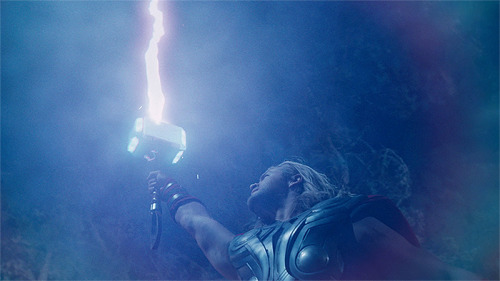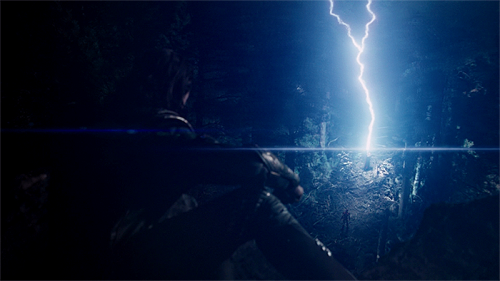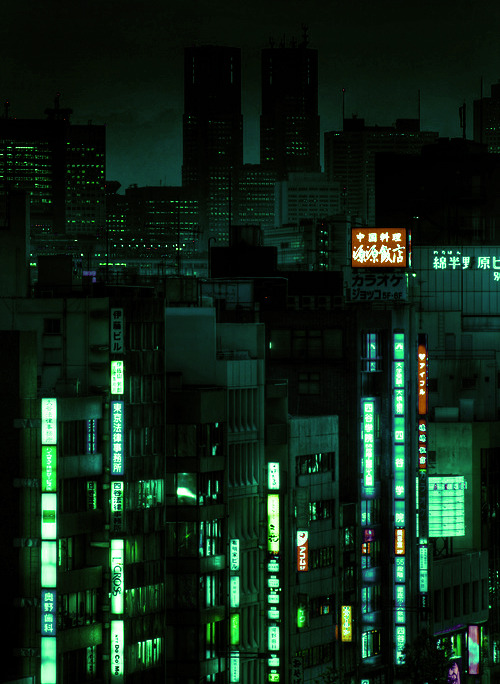#midgard
Soon there will be proof that our doctors have been giving death to all life, that so-called soldiers have been destroying the earth and instead of protecting her, and that the intellectual caged-birds have been devouring worms laced with truth and feeding the world shit instead.
Post link
Follow ▶️ @nordic.brotherhood for more viking memes.
⠀
⠀
⠀
#berserk #berserker #asgard #midgard #nordicbrotherhood #norse #norsemythology #norsepagan #norsegods #norsemen #norsememes #odin #odinism #oldnorse #heathen #heathens #heathensofinstagram #pagan #pagans #pagansofinstagram #pagansofig #paganmemes #proudpagan #proudviking #viking #vikings #vikingsofinstagram #valhalla #valkyrie #vikingmemes
https://www.instagram.com/p/B_BmWnknqqr/?igshid=ndddocmbm64o
Post link
Follow ▶️ @nordic.brotherhood for more Norse Facts!
⠀
⠀
⠀
#aesir #asgard #midgard #nordicbrotherhood #norse #norsemythology #norsepagan #norsegods #norsemen #norsememes #odin #odinism #oldnorse #oldways #heathen #heathens #heathensofinstagram #pagan #pagans #pagansofinstagram #pagansofig #paganmemes #proudpagan #proudviking #viking #vikings #vikingsofinstagram #valhalla #valkyrie #vikingmemes
https://www.instagram.com/p/B–z9LfHmK6/?igshid=pvmoa65pq1j7
Post link
Norse Mythology
Victo Ngai
I am so excited to reveal the cover for @neil-gaiman ’s Norse Mythology paperback, hitting the shelves on March 6th, 2018. I have always been a fan of mythologies and fantasies as well as Neil’s books and lectures, so unsurprisingly I devoured this book when it first came out in hard cover format, adorned by Sam Weber’s beautiful cover. It was a beautiful surprise when the paperback cover fell into my lap, and I was able ready to jump right in without needing to read the manuscript.
Water and stars have always feel timeless to me, I imagine Mjölnir being washed up on a shore of stars. How did the hammer end up in the sea? Maybe the not-the-brightest Thor has lost it, yet again, or maybe the gods and human have been long gone. Either way, the mythologies endure, and the cycle continues. Another reason behind the water concept is that the Norse world is flooded both when it is created and destroyed. What fascinates me the most about Norse Mythology is its cyclic perspective on time, which Neil has elegantly written in this book’s introduction: “Had Ragnarok happened yet? Was it still to happen? I did not know then. I am not certain now. It was the fact that the world and the story ends, and the way that it ends and is reborn, that made the gods and the frost giants and the rest of them tragic heroes, tragic villains. Tagnarok make the Norse world linger for me, seem strangely present and current, while others, better documented systems of belief felt as if they were part of the past, old things.” This image can be from any point of time in the world of Norse Mythologies.
Personally I think a good illustration doesn’t just create a scene, it creates a believable mythology. The richer the story-telling details, the more believable the myths are. The decorations on Mjölnir are inspired by the world which the hammer defends: we have Midgard and Asgard in the middled, connected by the World tree are and the rainbow bridge, surrounded by the Midgard serpent. The world tree extends to the handle where we can find the dragon Nidhogg. The two circular symbols on the side are the sun and moon.
Many thanks to Neil Gaiman, AD Steve Attardo and W.W.Norton.
Post link
D&D Group Commission: The Phoenix V
Characters left to right:
Ivrian, Shadowfey Rogue
Torvik, Dragonborn Monk
Lunes, Tiefling Sorcerer
Thoradin, Dwarf Paladin
Vana, Minotaur Ranger
►Store►buy me a coffee ► support on patreon ►more D&D art
Post link
Yggdrasil, the World Tree
By Simon E. Davies of Human Odyssey
In the beginning of the Norse cosmos, there existed an eternal Void, known as Ginnungagap. Out of this nothingness sprang Yggdrasil, a huge Ash tree. Its newly emerging branches held two primordial worlds; Niflheim, a world of ice & frost, and Muspellheim, a realm of molten fire.
When a spring erupted from Nifelheim (known as Hvergelmir), it created a river which crossed the void into Muspellheim. Here, the hot air scorched the freezing river creating a new world, known as Jotunheim, land of the giants.
From this bloodline of primordial beings came Odin, Vili and Ve, who despised the father of giants who ruled his people with malice and brutality. When the chance came, the brothers slew the frost giant, and from his body they created Midgard, a world of mortals. Surrounding this realm they placed a great ocean which nourished the roots of the great tree.
Yggdrasil grew ever higher, forming a new realm called Asgard, which is located on the highest branch of the world tree. This was where Odin, king of the Aesir would take his people to settle a new civilisation. It was said this race of gods brought culture and technology to the world of mortals via a great causeway called Bifrost.
Bifrost was a burning rainbow bridge, connecting Midgard (the world of mortals) with Asgard. This colourful overpass emerged from Himinbjörg, a mountain hall guarded over by the ever-vigilant Heimdall. This watchmen of the gods kept an eye on the mortals below, making sure no giants breached their homeland.
As Yggdrasil continued to grow, a new land emerged on one of its branches called Vanaheim. It was a land full of luscious forests and wild meadows. From this primal wilderness emerged a race of gods known as the Vanir. This tribal people lived near the coast, ruled by Njörðr, a seafaring god who loved wealth and magic, a trait common among his people.
A great tension broke out between the Vanir and the Aesir resulting in a long winded war. It eventually ended in a stalemate, so many of the gods sent their families as hostages to the opposing tribe to help bring them closer together. Njörðr’s son, Freyr, was placed in charge of Alfheim, homeland of the Elves. This class of god-like beings were said to be “more beautiful than the sun.”
These elves were also linked to another realm far below the Earth. Legend says a tribe from Alfheim were exiled from their homeland many eons ago, and eventually sought refuge with the dwarves of the underworld. These subterranean beings had build their homes around the roots of Yggdrasil, carving a network of labyrinths, mines and forges for their empire. They called it Niðavellir, and the elves, who skin eventually became black as night, called it Svartalfar.
All the beings of Yggdrasil, mortals, gods, dwarves and elves would eventually die, and their souls were destined for several realms. If the Aesir died valiantly in battle, they would find rest in Valhalla, for all others, Helheim was their inevitable destination. This dark and gloomy abode resided at the tip of Yggdrasil’s deepest root. This afterlife was ruled over by Loki’s daughter Hel, a strange being who was half black and half flesh-coloured, characterised by a gloomy, downcast appearance.
There are a number of sacred creatures which live within Yggdrasil. this includes the monstrous wyrm Níðhöggr who gnaws at the roots of Nifelheim, weakening the great tree of Yggdrasil. This frost dragon was also known for eating the corpses of the Nifelheim when found guilty of murder, adultery and oath-breaking.
Atop the highest branches of the world tree is perched a great eagle and his hawk companion Vedrfolnir, who sits between his eyes. The two stare deep into the Norse cosmos, perhaps representing insight and awareness.
Ratatosk is a squirrel who runs up and down the world tree to carry messages between the unnamed eagle and Níðhöggr the wyrm. This mischievous critter is said to stir trouble between the all knowing eagle and the world hungry dragon.
Among the branches of the Great Ash tree live four stags known as Dáinn, Dvalinn, Duneyrr and Duraþrór. These ravenous beasts eat the branches of the World Tree, perhaps representing the four seasons. When they eat too much, winter ensues, when they are full, the leaves grow thick and lush in the midst of summer.
Perhaps the most important guardians of Yggdrasil are the three Norns (witches) who lives at the well Urd (below Midgard). Their names are Urd “past”, Verdani “present” and Skuld “future”. These three hags are the goddesses of fate, who spend most their time spinning the threads of life, deciding the fate of every human, animal and god. Every day the Norns will also carry water from Urd’s well, and pour it over Yggdrasil. The water from the well is of vital importance to keep the tree green and healthy.
It is the Norns who foretold Ragnarok, the twilight of the Gods and the fall of Yggdrasil. It is said that Ragnarok will begin when the wolf, Fenrir, son of Loki, breaks free of his imprisonment. This will lead to a chain reaction of events including the Midgard snake Jormungandr rising from the sea and a wolf (known as Skoll) devouring the sun, and his brother Hati, eating the moon, plunging the earth into darkness. The stars will vanish from the sky.
Everything will come to a head in a huge battle that draws in all the races of the nine worlds. It will conclude with Surter, king of the fire giants, setting fire to the great Yggdrasil. The nine worlds will burn, and friends and foes alike will perish, culminating with the earth sinking deep into the abyss of the sea.
Post link

Ghost of Sparta by David Nakayama
A Jotunn called Rasvalg once caused a great deal of trouble for Midgard. In the form of an eagle, he fanned great gusts of wind across the land, causing plants, animals, and men to die. Loki and Thor resolved to put an end to this mischief, and set out for Jotunnheimr in Thor’s goat-drawn chariot. While passing through Midgard, they stopped to rest one night in the home of a poor farmer with a wife and two children. The family did not have enough food to properly accommodate their guests, so Thor slaughtered his two goats to feed the group. Thor asked that the bones be laid on the skins when the meal was finished, and that no one break the bones.
Sensing an opportunity for mischief, Loki suggested to the farmer’s son, Tjalfe, that he should break open the bone to eat the marrow inside, reasoning that it was the best part, and contained magical properties. Tjalfe agreed with Loki’s logic, and did as was suggested. In the morning, Thor resurrected his two goats from their bones and skin, using his hammer. But one of the goats was lame, because of Tjalfe’s actions.

Thor was furious at the insubordination, but the father eventually managed to quell Thor’s temper by offering his two children, Tjalfe and Roskva, as servants. They would accompany Thor and Loki to Jotunnheimr, and the group would return after their mission to retrieve Thor’s two goats.
They set off once more, and that night they found a cave that contained five different passages. Startled by roaring sounds outside, they hid themselves in the back of the smallest passage and stayed there for the night. When they awoke and emerged from the cave, they found that the sound had been the snoring of a giant Jotunn, and the passage of what they thought was a cave was actually the thumb of the giant’s glove. The giant introduced himself as Skrymir, and offered to accompany the group. He took it upon himself to carry their provisions, but the giant’s strides were so long that the group could not stop to rest at all, and they were not able to eat all that day.
When Skrymir finally stopped to sleep for the night, the group was famished. They attempted to open the bag to their provisions, but they could not untie the knots with which the giant had sealed it. Even Thor’s immense strength was no match. Frustrated, Thor attempted to wake Skrymir, but the task seemed impossible. Thor threw his hammer three times at the giant’s head, each time with more force than the last. But Skrymir only mumbled that a leaf or an acorn must have fallen on him, and he promptly returned to sleeping each time.

They set out again the next day, and Skrymir announced that he was going on ahead, and they quickly lost sight of him. Eventually, Thor, Loki, and Tjalfe arrived at the castle of the Jotunn Utgarda-Loki (no relation to Loki). The group proceeded to attempt a series of contests, in order to prove themselves worthy of staying at the castle. Loki, hungry from losing his provisions to Skrymir, offered that he could eat more than any Jotunn there, and thus, an eating contest was begun. Loki and his opponent Logi began eating at opposite ends of a trough, and they both reached the exact middle at the same time. However, Loki had only eaten the food, while Logi had eaten the food, the bones, the dishes, and the trough, so Loki lost.
Tjalfe fancied himself to be a swift runner, so he competed against one called Hugi in a footrace. Although Tjalfe was indeed faster than most, he too was defeated by his opponent. Thor then asserted that he could drain a drinking horn, and so a horn was provided for him. Thor drank until he was about to burst, but could only lower the level by a small amount. It was then suggested that Thor lift Utgarda-Loki’s cat, but in this task Thor could only lift one paw. Finally, a feeble, elderly woman named Elli was called out to wrestle with Thor, and in this task too Thor was defeated.

Utgarda-Loki escorted the three humbled guests out of his castle, and once they were outside, he revealed to them that they had been tricked. Fearing the strength of his visitors, Utgarda-Loki had disguised himself as Skrymir, and he had tied up their food so they would be weak with hunger when they arrived at his castle. When Thor had attempted to strike Skrymir’s skull with his hammer, the hammer blows instead had fallen on a nearby mountain, and the force of the blows had created three deep valleys. If any one of the blows had struck Utgarda-Loki, he would have died.
Loki’s eating contest had been against fire, which consumes everything in its path, so it was incredible that Loki was able to perform as well as he had against the flame. Tjalfe’s footrace had been against thought, which works quicker than anyone can run. Thor’s drinking horn had been attached to the sea itself, and Thor had actually managed to lower the level of Midgard’s oceans with the amount he drank. The cat Thor was tasked with lifting was in fact Jormungandr, the Midgard serpent so large it encircled the world, so lifting its paw was an incredible feat of strength. Finally, the old woman had been old age itself, and old age eventually brings everyone, even gods, to their knees. That Thor had lasted as long as he did was better than anyone could have achieved.
Utgarda-Loki apologised for the trickery, but confessed that he was right to do so, because the strength of the group was terrifying, and he could never have beaten them through honest means. Thor raised his hammer, frustrated that he had been made to look a fool, but before he could attack, both Utgarda-Loki and his castle had disappeared. Tjalfe and Roskva returned with Loki and Thor, and served Thor from then on.
Angrboda was a Jotunn witch who sowed seeds of discord wherever she went. She was responsible for provoking the lust for gold, and cheating and murders in Midgard. Acting on behalf of the Jotunns who desired to destroy the Aesir and Vanir, she had used her trickery to create a vast divide between the two. She was eventually discovered and burned for her actions, but she was not so easily destroyed. Her body burned away, but her heart did not. From these remains, Angrboda was able to resurrect herself in entirety. As long as her heart was intact, she could continue to revivify.
The executors promptly attempted to burn the witch a second and third time, but each time, she resurrected, burned, and the heart remained. Loki saw that this game would go on forever if they did not dispose of the heart, so before Angrboda could resurrect again, Loki rushed forward, pulled the heart from the flames, and swallowed it.

But even with that, Angrboda’s evil was not completely destroyed. From the heart he had swallowed, Loki gave birth to three beings: Fenriswulf, Midgardsormr (or Jormungandr, as it was called by the Jotunn), and Hela. Fenriswulf, a large grey wolf, would go on to bite off the hand of the battle god Tyr, herald the beginning of Ragnarok by escaping his bonds, and destroy Odin in the final battle. Midgardrsormr was a serpent who would grow so large he encircled the world, and in the final battle he would destroy the mighty Thor. Hela, a normal woman on one half of her body and a corpse on the other, was the only one of the three who was not destined for evil. She would go on to become caretaker for the dead who were not killed gloriously in battle, in the realm of Niflheim.

Angrboda’s evil also persisted in the tension she had introduced between the Aesir and Vanir. Despite her death, her actions still resulted in a war between the two. In this way, Angrboda had succeeded.
Loki is the only inhabitant of Asgard who is capable of complete transformation. He could assume any form, animal or human, and any sex he pleased. Odin was skilled at disguising himself in different human forms – he often walked through Midgard in the form of an old man with a grey cloak and pointed hat – but he did not possess the ability to transform himself as Loki did.
Freya owned a cloak that allowed her to take the form of a hawk, but she was limited to only this one transformation, and it seemed that most of the magic was in the cloak itself. Loki borrowed this cloak on many occasions, most likely because using a transformation cloak rather than his raw transformative power consumed considerably less magic, and was therefore easier.
The map of the Nine Realms from the current arc of Thor: God of Thunder. I love Thunder; the God-Butcher/God-Bomb arc was great, but the Malekith issues have basically been a Thor swords-and-sorcery tale, which is what every Thor book should be. And no swords-and-sorcery tale is complete without a cool map.
Next issue Thor is going to fight a dragon. Jason Aaron is making all of my Thor-dreams come true with this book.
Thor: God of Thunder#13, September 2013.
Map by Haemi Jang.
Post link

